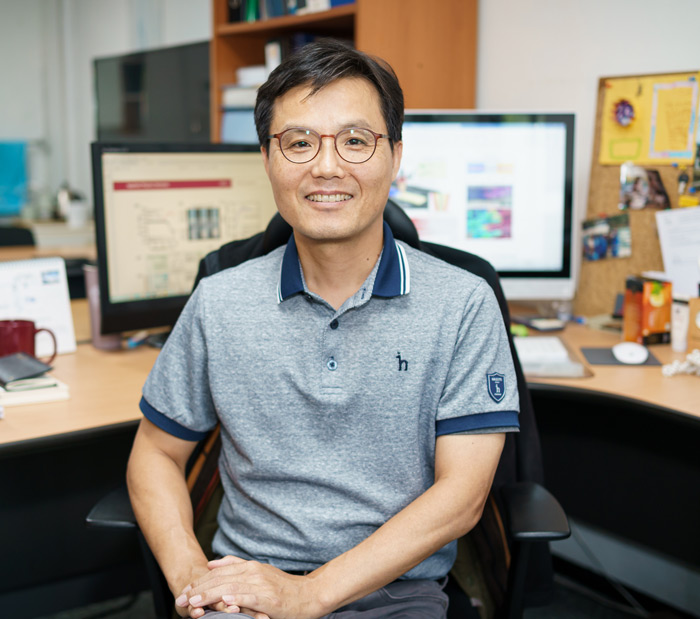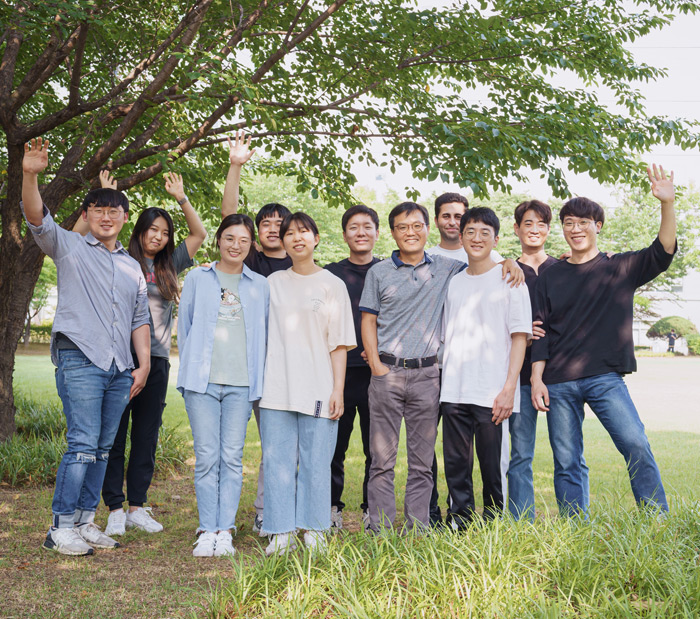Research Stories
Shape Memorable Collagen-Biocomposite Scaffold for the Biomedical Engineering Field
Scaffold-based tissue engineering aims to develop biocompatible scaffolds for the recovery of defected tissues or organs exceeding the self-healing capacity.
Bio-Mechatronic Engineering
Prof.
KIM, GEUNHYUNG
Researcher JiUn Lee
Shape Memorable Collagen-Biocomposite Scaffold
for the Biomedical Engineering Field
Scaffold-based tissue engineering aims to develop biocompatible scaffolds for the recovery of defected tissues or organs exceeding the self-healing capacity. Collagen, one of the main structural proteins in human tissues, has been widely used for the fabrication of scaffolds. However, collagen-based scaffolds prepared in vitro have limitations in that they are easily deformed by external forces.
The research team led by Prof. GeunHyung Kim (first author, researcher JiUn Lee) introduced a fabrication process utilizing collagen properties for the four different types of collagen hydrogels preparation. Among the structures, two types of them showed shape memory hydrogel (SMH) properties. In the case of SMH (Cryo-gel) manufactured through a low-temperature process, the deformed structure recovered immediately after the water immersion, but low cellular activities are a limitation. On the other hand, in the case of SMH (F-gel) produced via collagen fibrillogenesis, the structure recovered slowly, but it was shown that high cell activities were promoted due to the nanofibrous structure.
[Figure 1] Schematic of various types of collagen-based hydrogel
In addition to reporting these characteristics, the research team developed a process to fabricate a composite hydrogel that fused the advantages of two different types of SMHs (Cryo-gel and F-gel). The fabricated shape memorable biocomposite hydrogels not only possess the fast shape recovery properties of Cryo-gel, but also have a nanofiber network similar to that of F-gel in the structure. These unique structures induced enhanced cellular activities than Cryo-gel. Furthermore, to further add the functionality of the shape of memorable biocomposite hydrogels, heparin, which is used to delay the release of growth factors, or hydroxyapatite, a major component of bone tissue, were mixed. The research team confirmed that even if these various materials were mixed, all of the produced hydrogels maintain the shape memory properties. In addition, by combining the manufacturing process with 3D printing technology, it was shown that a 3D structure could be printed. The deformed 3D printed scaffold could be recovered to its initial structure by immersion in water. The research team also reported the possibility of its use as an injectable scaffold that can be used for minimally invasive operations.
[Figure 2] Optical images of shape recovery of the 3D printed collagen biocomposite scaffold
Prof. Kim said, “The result of this study is expected to be a technology that overcomes the limitations of being easily damaged and deformed in the existing collagen-based scaffolds and broadens the scope of application of the collagen to various medical fields.”
In addition, Prof Kim’s research group used bioprinting technology to fabricate a muscle-ligament complex artificial tissue model (myotendinous junction) (first author, researcher WonJin Kim) and a collagen/bioceramic porous structure containing adipose-derived stem cells (first author, researcher Youngwon Koo). All the fabricated structures showed outstanding tissue regeneration ability compared to a conventional 3D cell structure.
The research was supported by a grant from the National Research Foundation of Korea grant funded by the Ministry of Science and ICT for the Bioinspired Innovation Technology Development Project. The results were published in Applied Physics Reviews (IF = 19.2, 2022. Jun.) as a feature article and Bioengineering & Translational Medicine (IF = 10.7, 2022. Mar., Apr.), respectively.
※ Article titles
- Collagen-based shape-memory biocomposites (Applied Physics Reviews)
- A bioprinted complex tissue model for myotendinous junctionwith biochemical and biophysical cues (Bioengineering & Translational Medicine)
- Bioprinted hASC-laden collagen/HA constructs with meringue-like macro/micropores (Bioengineering & Translational Medicine)
※ Feature article: https://aip.scitation.org/doi/10.1063/10.0011692


